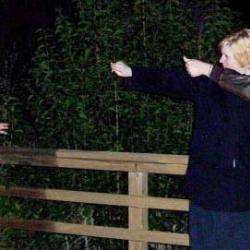Source Institutions
Source Institutions
Add to list Go to activity
Activity link broken? See if it's at the internet archive

This fun and simple hands-on astronomy activity describes techniques scientists use to find planets orbiting other stars. Learners will spin “stars” to simulate star wobble (astrometry and radial velocity) and will explore the transit method and direct imaging of planets. The pdf contains step-by-step instructions, photos, presentation tips, and links to background information.
- Under 5 minutes
- 10 to 30 minutes
- $5 - $10 per group of students
- Ages 6 - adult
- Activity, Simulation
- English
Quick Guide
Materials List (per group of students)
- 3 Foam balls (“stars”): one will have a planet, one will be without a planet
- 1 Large “Planet” (small ball) attached to a golf tee
- Alternate Material for large planet on the golf tee: Clay
- 1 Toothpick
- Tiny ball of clay (1 mm)
- A book approximately one inch thick
Subjects
-
Earth and Space Science
-
Astronomy
- Stars and Galaxies
-
Astronomy
-
Physical Sciences
-
Light and Optics
- Sunlight and Color
-
Vibration and Waves
- The Doppler Effect
- Diffraction and Interference
-
Light and Optics
Audience
To use this activity, learners need to:
- see
- be mobile
- touch
Other
Components that are part of this resource:
This resource is part of:
Access Rights:
- Free access
By:
Rights:
- All rights reserved, Astronomical Society of the Pacific,
